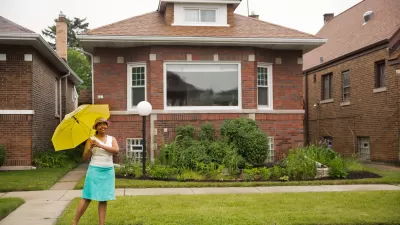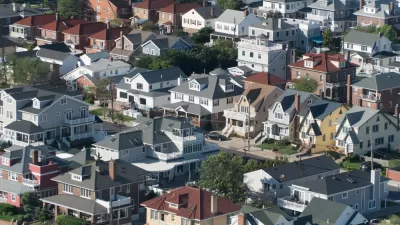Like many American cities, the site of white supremacist unrest in 2017 has a long history of residential discrimination by race. This mapping project seeks to uncover the roots of today's disparities.

Following white supremacist demonstrations that shook the nation in 2017, Zoe Sullivan writes, "the Charlottesville Area Community Foundation created the Heal Charlottesville Fund. In 2018, that fund awarded nearly one million dollars to organizations and initiatives aimed at addressing systemic racism." One of this grants went to Mapping C'Ville, an ambitious effort to chart out just how racial convents discriminated against black homebuyers.
The project's creator Jordy Yager points to economist Raj Chetty's Opportunity Atlas, which ranked Charlottesville low in terms of residents' ability to escape poverty over their lifetimes. That indicates a "structural problem," Yager said. He went on, "your environment, where you live, is the number one predictor of what happens to you in life. If where we live determines what happens to you in life, why do we live where we live?"
Mapping C'Ville has over 100 volunteers reviewing over 300,000 digitized property records and entering them into a searchable database. In addition to revealing the extent and effects of racial covenants, the project is also delving into how residential discrimination dovetails with infrastructural inequities and chronic underinvestment in black neighborhoods.
FULL STORY: Mapping Project Aims to Shed Light on Racial Covenants in Charlottesville

Alabama: Trump Terminates Settlements for Black Communities Harmed By Raw Sewage
Trump deemed the landmark civil rights agreement “illegal DEI and environmental justice policy.”

Planetizen Federal Action Tracker
A weekly monitor of how Trump’s orders and actions are impacting planners and planning in America.

Why Should We Subsidize Public Transportation?
Many public transit agencies face financial stress due to rising costs, declining fare revenue, and declining subsidies. Transit advocates must provide a strong business case for increasing public transit funding.

Understanding Road Diets
An explainer from Momentum highlights the advantages of reducing vehicle lanes in favor of more bike, transit, and pedestrian infrastructure.

New California Law Regulates Warehouse Pollution
A new law tightens building and emissions regulations for large distribution warehouses to mitigate air pollution and traffic in surrounding communities.

Phoenix Announces Opening Date for Light Rail Extension
The South Central extension will connect South Phoenix to downtown and other major hubs starting on June 7.
Urban Design for Planners 1: Software Tools
This six-course series explores essential urban design concepts using open source software and equips planners with the tools they need to participate fully in the urban design process.
Planning for Universal Design
Learn the tools for implementing Universal Design in planning regulations.
Caltrans
Smith Gee Studio
Institute for Housing and Urban Development Studies (IHS)
City of Grandview
Harvard GSD Executive Education
Toledo-Lucas County Plan Commissions
Salt Lake City
NYU Wagner Graduate School of Public Service





























